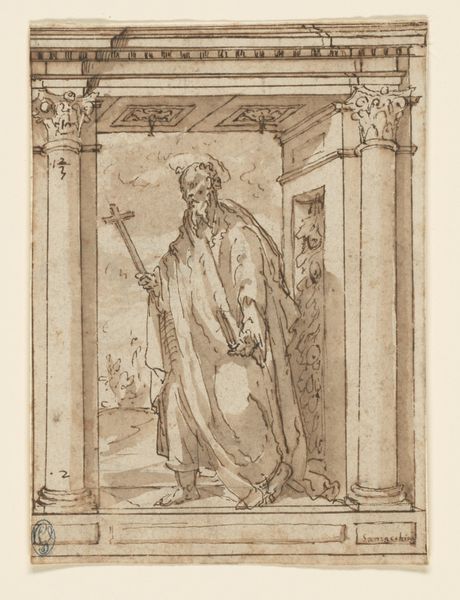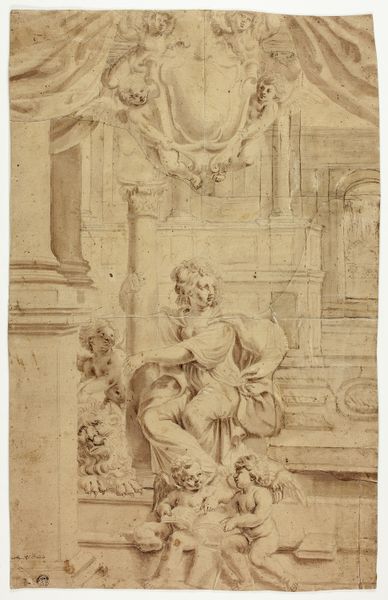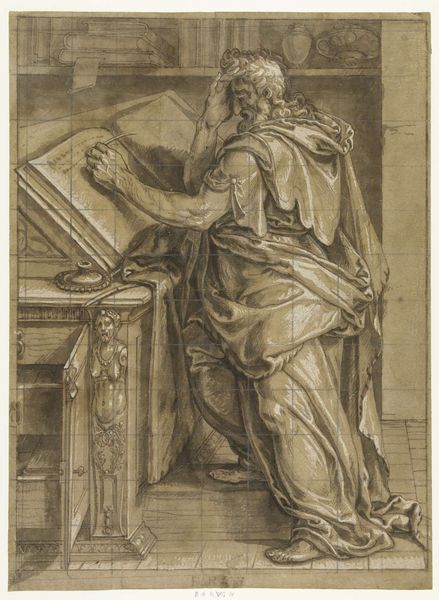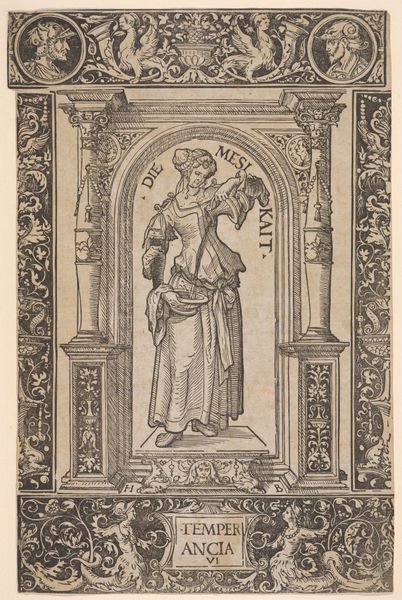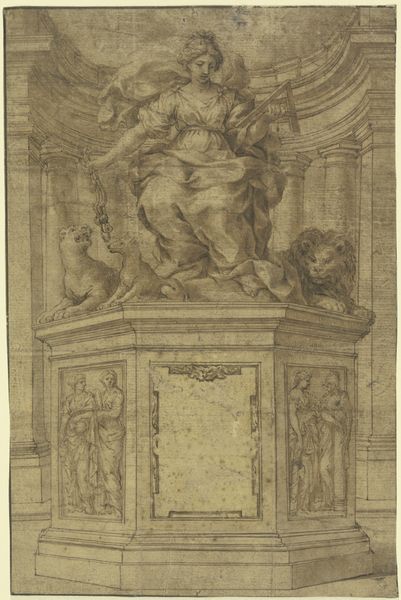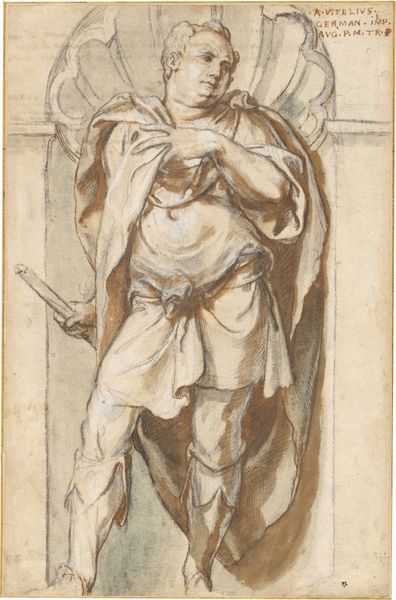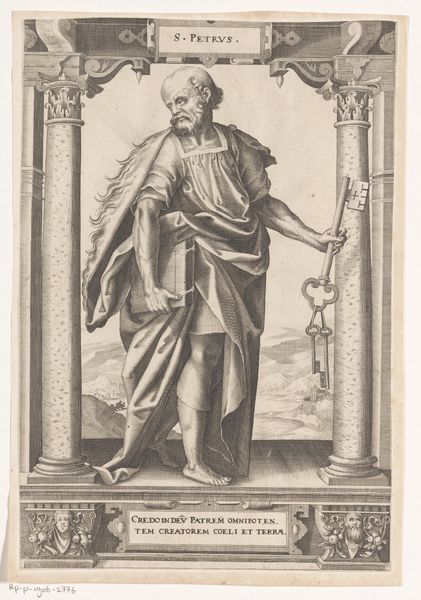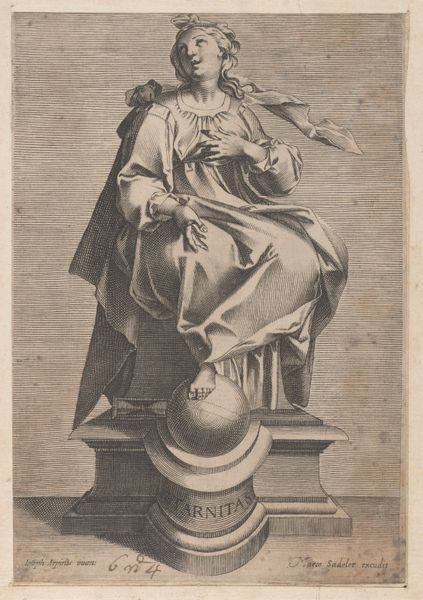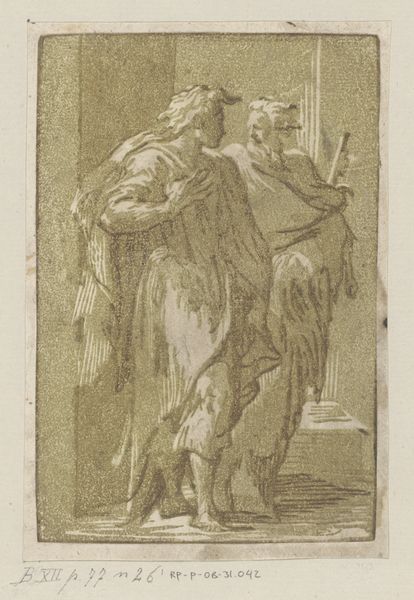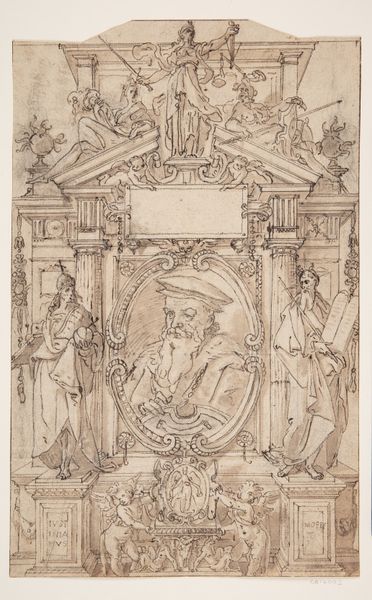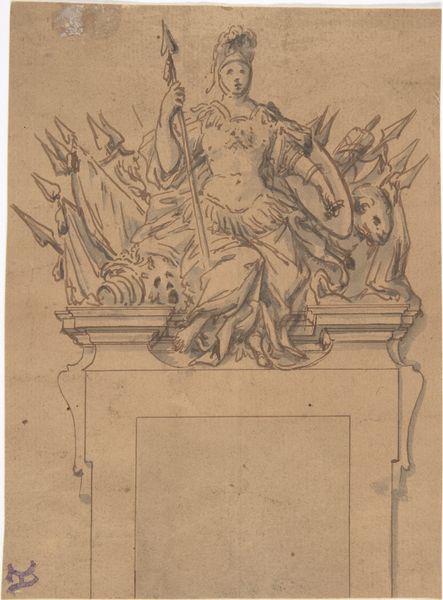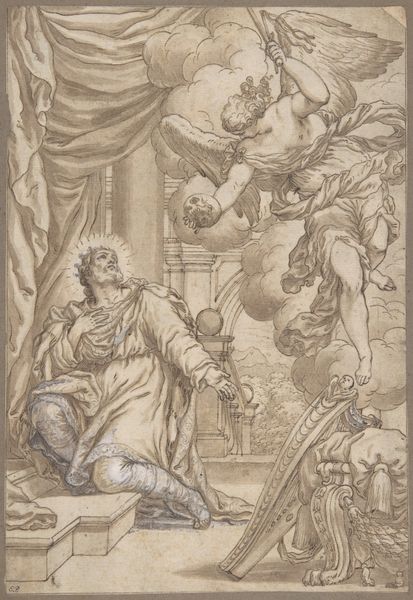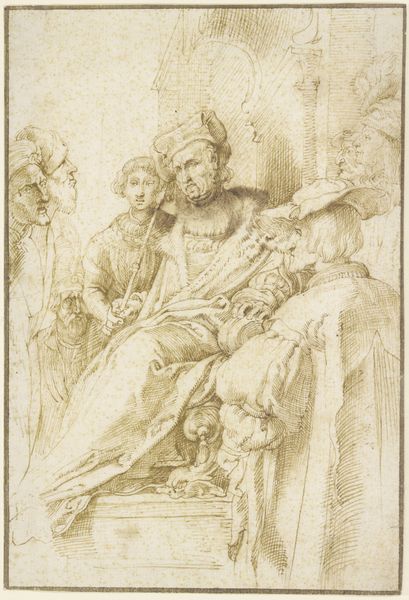
Draped Male Figure Standing in a Niche 1655 - 1730
0:00
0:00
drawing, ink, architecture
#
drawing
#
ink drawing
#
ink
#
history-painting
#
architecture
Dimensions: 12 5/8 x 8 3/8in. (32.1 x 21.3cm)
Copyright: Public Domain
Curator: Take a look at "Draped Male Figure Standing in a Niche," an ink drawing from around 1655-1730, created by Gregorio Lazzarini. Editor: My initial impression is somber, almost architectural. The figure feels heavy, anchored by those dramatic drapes, and framed almost like a sculpture. Curator: Let's consider the materiality. The ink wash, the varying line weights... they point to a deliberate, iterative process. Lazzarini clearly experimented, allowing the medium to dictate form. How does this emphasis on process impact the figure's depiction? Editor: Well, the figure is not merely depicted; it's constructed through ink, through labor. The drapery becomes more than just fabric. It transforms into an indication of the artistic labor of representation, perhaps gesturing towards the politics of viewership at the time. What class of people are allowed the labor of viewership and critical thinking versus representation and artistry? Curator: Interesting, you're bringing up labor in a broader socio-economic sense. To add to that, observe the drawing's relation to architectural practices. Lazzarini depicts the niche, effectively simulating stone or plaster. The image operates both as art and potential blueprint, thus occupying a peculiar space. The ornamental details on the left and right side have classical, powerful connotations. Editor: That framing is crucial; placing a figure within such architectural context—even simulated in ink—speaks to authority, to the systems that uphold this kind of representation. But even within a traditionally rendered power system, we may interrogate the figure and ask who it represents. There seems a deep connection between labor, historical depiction, and male figuration. Curator: Yes, the choice of representing the male figure becomes a statement, considering that the work itself could be deemed a labor in support of history-painting or even architecture. By using the labor of ink, Lazzarini participates in the artistic culture surrounding history-painting through the support of architectural practice. Editor: Precisely. Considering its existence now in the Metropolitan Museum of Art is so very interesting. Lazzarini’s drawing operates as both historical document and artistic creation. And by thinking through labor, we begin to consider the value of this piece through both contemporary and historic lenses. Curator: Indeed, exploring the interplay of material and context provides invaluable insights into both the artist and the wider world in which this piece was created. Editor: Yes. I'll never see this figure in the niche quite the same way now. It's all interconnected, isn't it?
Comments
No comments
Be the first to comment and join the conversation on the ultimate creative platform.
